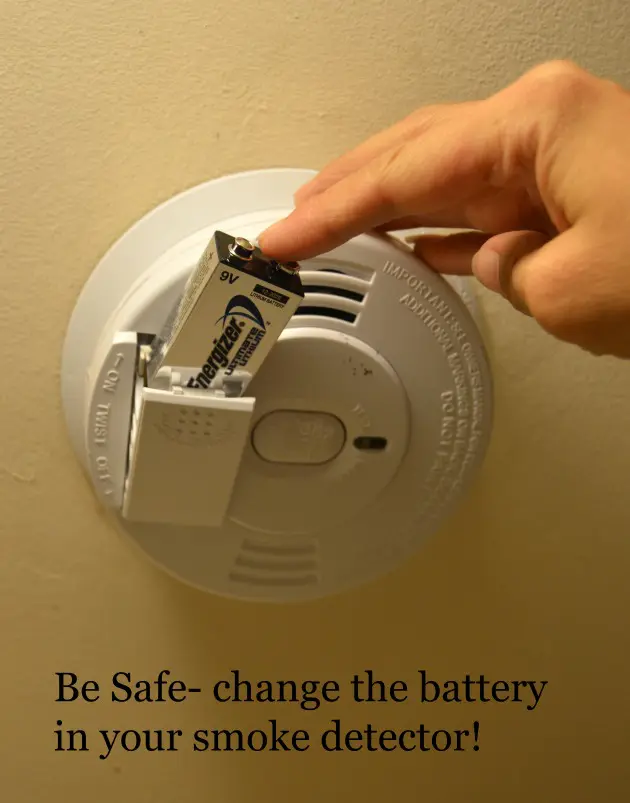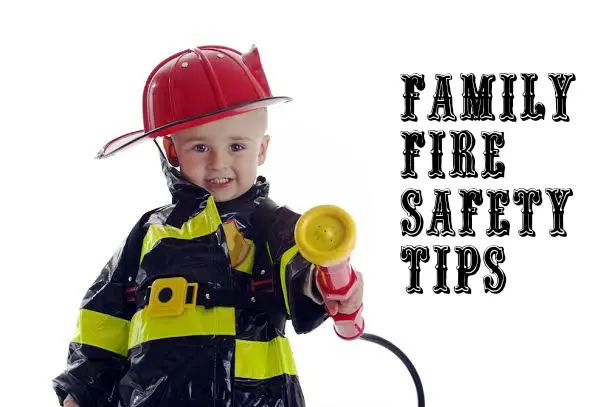Although no one likes to think about fires and the potential accompanying destruction, it’s one of those areas that we all need to talk about. Indeed, making sure your entire family is prepared is the single most effective action you can take in preventing fires in the first place. These tips also help in safely navigating how to deal with a fire in the event that it actually happens. You can and should educate your kids on the seriousness of a fire without scaring them. Here are some general guidelines and some family fire safety tips to help keep your entire family safe and sound.
5 Important Family Fire Safety Tips

Fire Prevention Safety Tips
The first step is testing your smoke detectors and fire alarm systems. All homeowners should take 10 minutes to make sure their home is properly protected from fires. Take inventory that smoke alarms are on every level of the home and inside each bedroom. Also be sure to install carbon monoxide alarms on each level of the home. Make sure you test the alarms at least once a month to ensure the batteries work. This also ensures that the family is accustomed to whatever sound yours makes.
Step two, ensure that the entire family knows where the fire extinguishers are located and how to use them.
Finally, invest in a second-story (and third, if applicable) fire ladder. Keep it near a centralized window so that anyone upstairs can safely escape the home. If possible, purchase one for each upstairs bedroom.
Here is why these three fire safety tips are so important:
FEMA suggests several tactics for preventing fires and for fire safety. Number one on the list is to install a smoke alarm on every level of your home. A working smoke alarm can double your chances of survival.
Homes without fire alarms account for 23 percent of fatal residential fires (according to data collected by the U.S. Fire Administration’s National Fire Incident Reporting System.)
Once you cover the prevention basics where your fire combating equipment is concerned, create a family fire safety plan.
Fire Safety Tips For Kids
Teaching kids about fire safety is crucial to help them understand the potential dangers of fire and how to respond in case of an emergency. Here are some fire safety tips for kids:
- Stop, Drop, and Roll:
- Teach kids the importance of stopping, dropping to the ground, and rolling if their clothes catch fire. Practicing this helps them remember the steps in case of an emergency.
- Crawl Low under Smoke:
- Explain to children that in case of a fire, they should stay close to the ground and crawl to avoid smoke inhalation, as smoke rises.
- Cool to the Touch:
- Emphasize the concept that objects around them should be cool to the touch. Children should be cautious of hot surfaces and avoid touching anything that feels warm.
- Don’t Hide, Go Outside:
- Stress the importance of getting out of the house immediately if there’s a fire. Remind them not to hide but to go to a predetermined safe meeting place outside, such as a neighbor’s house or a specific spot in the yard.
- Know Emergency Numbers:
- Make sure kids know how to dial emergency numbers like 911. Practice role-playing scenarios to help them feel comfortable and confident in an actual emergency.
How To Make A Family Fire Safety Plan
Your family fire safety plan can include anything you like that specifically relates to your family but in general, here are some of the things you should include:
- Make sure you have an actual plan written down and you go over it with your entire family as often as necessary.
- Include important numbers like the hospital, fire department and police department, in addition to the reflexively-dialed “911.”
- Draw a diagram of your home and clearly mark all of the available exits.
- Designate a centralized, off-site rendezvous point where all family members will meet in the event you are separated.
- Assign family members to make sure pets are safely escorted out so that “no paws are left behind.”
After you create an escape plan, go over it with your family. Practice a fire escape plan, with two ways out of every room. Caution everyone to stay low to the floor when escaping from fire and never to open doors that are hot. Select a location where everyone can meet after escaping the house. While a home fire can be extremely dangerous, the proper knowledge and preparation can make the difference between life and death.
In addition to the above, be sure to actively participate in enhancing your overall fire safety around the house. To help with that, here are some fire safety tips for the kitchen.
Fire Safety In the Kitchen
If you are cooking in the kitchen, never leave anything unattended. All it takes is a second for a child to pull down a saucepan and cause a grease fire or knock something over to an actively heated stovetop burner. Likewise, even if you are in the kitchen and children are present while you’re cooking, make sure that pot handles are turned inward and away from the edge of the stove.
One mom I know even taped off a “no-no zone” around the range! She placed pieces of masking tape on the floor to create a three-foot section in front of and around the sides of the range that the kids knew they couldn’t enter. And because they could actually see the area that was off limits, there was no uncertainty about the section they couldn’t infiltrate!
Home Fire Safety Tips
FEMA also suggest some important heater safety practices that will help prevent fires. Portable heaters need their space and you should keep anything combustible at least three feet away. If you have a fireplace, use fire screens and have your chimney cleaned annually. The creosote buildup can ignite a chimney fire that could easily spread.
Another major source of concern is lit candles and lamps. Interestingly, this area seems to apply to pets more so than kids, at least from my personal history.
The best example I can share related to lamps happened when I was a teenager. Atticus was our 4-month-old kitten who loved to get into absolutely anything and everything he could! One night we all went out to dinner and when we came home, we were immediately hit with a burning smell. We went into the living room and on the couch was an overturned lamp burning the cushion. (My mother, being the consummate home-maker that she is, had left the light on so that we wouldn’t have to come home to a dark house!)
Apparently, Atticus had knocked over the lamp that was on a console table directly behind the couch. When he knocked it over, the shade came off and the bulb landed on the cushion. By the time we came home, the bulb had burned through the fabric and was working its way through the pillow cover to the cushion stuffing below.
Had we not come home when we did, who knows what kind of destruction we could have encountered. The moral of the story is that no matter how unlikely an accident seems, they’re called ‘accidents’ for precisely that reason. You can’t anticipate how or when it will occur. There’s no need to take unnecessary risks when fire is a possibility (no matter how remote that possibility seems). Also, don’t leave lights on and candles burning when you exit a room!
Conclusion
Remember to tailor these tips to the age and understanding level of the children. Regularly review and practice fire safety measures to ensure they become ingrained habits. I hope these fire safety tips help keep your family informed about the dangers so that they can avoid them. What other family-focused fire safety tips have you gleaned from personal stories?
Related Posts:

